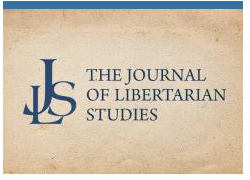It is not possible to replace productive credit by means of the easy monetary policies of the central bank. If this could have been done, then the world would have already ended poverty. Original Article: “‘Idle Resources’ Are Problems Caused by the Central Bank” Resources that are utilized to promote economic prosperity in normal times become underutilized during recessions. Some experts are of the view that what is required are policies which will increase the availability of credit to make greater use of underutilized resources. On this Ludwig von Mises wrote, Here, they say, are plants and farms whose capacity to produce is either not used at all or not to its full extent. Here are piles of unsalable commodities and hosts of unemployed workers. But here are
Topics:
Frank Shostak considers the following as important: 6b) Mises.org, Featured, newsletter
This could be interesting, too:
RIA Team writes The Importance of Emergency Funds in Retirement Planning
Nachrichten Ticker - www.finanzen.ch writes Gesetzesvorschlag in Arizona: Wird Bitcoin bald zur Staatsreserve?
Nachrichten Ticker - www.finanzen.ch writes So bewegen sich Bitcoin & Co. heute
Nachrichten Ticker - www.finanzen.ch writes Aktueller Marktbericht zu Bitcoin & Co.
 It is not possible to replace productive credit by means of the easy monetary policies of the central bank. If this could have been done, then the world would have already ended poverty.
It is not possible to replace productive credit by means of the easy monetary policies of the central bank. If this could have been done, then the world would have already ended poverty.
Original Article: “‘Idle Resources’ Are Problems Caused by the Central Bank”
Resources that are utilized to promote economic prosperity in normal times become underutilized during recessions. Some experts are of the view that what is required are policies which will increase the availability of credit to make greater use of underutilized resources. On this Ludwig von Mises wrote,
Here, they say, are plants and farms whose capacity to produce is either not used at all or not to its full extent. Here are piles of unsalable commodities and hosts of unemployed workers. But here are also masses of people who would be lucky if they only could satisfy their wants more amply. All that is lacking is credit. Additional credit would enable the entrepreneurs to resume or to expand production. The unemployed would find jobs again and could buy the products. This reasoning seems plausible. Nonetheless it is utterly wrong.1
The credit that is lacking is productive credit. Briefly, productive credit emerges when a wealth generator lends some of his wealth to another wealth generator. By giving up the use of the loaned wealth at present, the lender is compensated in terms of interest that the borrower agrees to pay.
As a rule the greater the expansion in wealth the lower the interest rate that the lender is likely to agree to accept, i.e., his time preference is likely to decline.
Observe that the interest rate is just an indicator, as it were—it is not responsible for the expansion in wealth. Any policy that tampers with interest rates makes it much harder for wealth generators to assess individuals’ demands.
This in turn leads to the misallocation of productive credit and to the weakening in the wealth generation process.
As a result of distorted interest rates, an overproduction of some goods and underproduction of others emerges.
Loose Monetary Policy Appears to Work Because of the Expanding Pool of Wealth
As long as the pool of wealth is expanding, easy monetary policy is likely to appear to “work.” Once, however, the pool becomes stagnant or starts declining the “music stops” and no amount of central bank monetary pumping is going to “work.”
On the contrary, the more aggressive the central bank’s stance is in attempting to revive the economy the worse things are likely to get, the reason being that easy monetary policy strengthens the exchange of nothing for something, thereby weakening the process of wealth generation—the heart of economic growth.
One could argue that, irrespective of the reasons for the emergence of idle resources, the role of the central bank is to pursue policies that will make possible a greater use of these resources.
Loose monetary policy cannot replace savings that are required to employ idle resources. Note that the central bank is not a wealth generator and hence does not have savings to support economic growth (remember that individuals in the various stages of production require final consumer goods to maintain their life and well-being, not the pieces of paper we label money).
Idle Resources Emerge Because of the Previous Boom
As a rule, idle resources emerge because of the boom-bust policies of the central bank. Because of the previous easy monetary stance, various nonproductive or “bubble” activities have emerged. These activities depend on easy monetary policy for their existence, which diverts wealth to them from wealth generators.
A tighter stance of the central bank stops this diversion, thereby weakening bubble activities while at the same time strengthening the wealth-generating activities, thereby strengthening the process of wealth generation.
Observe that the damage done by an easy monetary policy, which undermines the process of wealth generation, cannot be undone in the short term.
Once the process of wealth generation strengthens, the consequent expansion in the pool of wealth, all other things being equal, makes an expansion in the pool of savings possible. This in turn makes it easier to absorb idle resources. According to Mises,
Out of the collapse of the boom there is only one way back to a state of affairs in which progressive accumulation of capital safeguards a steady improvement of material well-being: new saving must accumulate the capital goods needed for a harmonious equipment of all branches of production with the capital required. One must provide the capital goods lacking in those branches which were unduly neglected in the boom. Wage rates must drop; people must restrict their consumption temporarily until the capital wasted by malinvestment is restored. Those who dislike these hardships of the readjustment period must abstain in time from credit expansion.2
Furthermore says Mises,
If commodities cannot be sold and workers cannot find jobs, the reason can only be that the prices and wages asked are too high. He who wants to sell his inventories or his capacity to work must reduce his demand until he finds a buyer. Such is the law of the market. Such is the device by means of which the market directs every individual’s activities into those lines in which they can best contribute to the satisfaction of the wants of the consumers.3
The fact that the productive credit is in short supply is most likely the result of the previous expansionary monetary policies of the central bank, which have resulted in the diversion of wealth from wealth producers to non–wealth producers. In the process, this diversion has weakened the pool of wealth and in turn weakened the supply of productive credit.
Observe that it is not possible to replace productive credit by means of the easy monetary policies of the central bank. If this could be done, then most third world economies would have by now eliminated poverty.
Note that as long as the pool of wealth is expanding, loose monetary policy will appear to be reviving the overall demand. Loose monetary policy, however, is likely to weaken over time the process of wealth generation, and this is likely to result in the lowering of individuals’ living standards.
Once the pool of wealth begins to decline, attempts to boost the overall demand by means of easy monetary policies is going to make things much worse. Examples that come to mind in this regard are Zimbabwe and Venezuela.
A loose monetary policy that is aimed at boosting demand will not do the trick, for an increase in the demand cannot replace the savings that are required to employ idle resources. Note again that the central bank does not have savings to support the formation of wealth.
Some commentators are of the view that through loose monetary policies on the part of the central bank the economy can take off on its own, just as adding a little water to a pump, i.e., priming the pump, enables water to be pumped out of a well.
This metaphor is misleading, since without the expansion in savings, no expansion in economic activity can take place.
Again, pushing more money, and with it credit unbacked by wealth, cannot replace the nonexistent capital goods that are required for the expansion of wealth that in turn could absorb the unemployed labor and capital.
Conclusion
A major factor in the emergence of idle resources is the loose monetary policies of the central bank. These policies set in motion the diversion of wealth from wealth-generating activities toward nonproductive activities.
Observe that nonproductive activities cannot support themselves; they “cannot stand on their own feet.” This fact becomes obvious once the central bank reverses its easy monetary stance. The tight stance stops the diversion of wealth toward nonproductive activities. As a result, these activities come under downward pressure, since they cannot support themselves.
Obviously, then, easy monetary policies aimed at eliminating idle resources are going to make things much worse. They will deepen the misallocation of resources. In order to increase the usage of idle resources what is required is to follow the wishes of individuals in the market and not the wishes of government bureaucrats.
Given the state of the pool of wealth, it is quite possible that certain activities would have to be abolished all together and some other activities would have to be trimmed. This implies that individuals that are employed in activities that generate products which are on the lowest priority list of consumers would have to adjust their conduct. This could be done by accepting lower salaries or by being employed in activities that generate products which are on the highest priority list of consumers. To do this, they would have to alter their skills.
Various materials that were allocated toward bubble activities would have to reallocated toward some other uses. Given that the demand for various materials might not be as high as before, this means that their prices would have to come down.
Obviously, printing more money cannot fix the issue of idle resources. What is required is time to rebuild the pool of wealth, which was damaged by the previous easy monetary policies of the central bank.
The reinvigorated pool of wealth will make it possible to strengthen the pool of savings, which in turn will make it possible to employ various idle resources.
We can thus conclude that loose monetary policies cannot eliminate resource idleness but rather will increase the pool of unutilized resources.
The most important decision that authorities could make is to acknowledge the damage that the printing presses have caused and remove themselves from managing the so-called economy.
This Audio Mises Wire is generously sponsored by Christopher Condon. Narrated by Michael Stack.
Tags: Featured,newsletter








